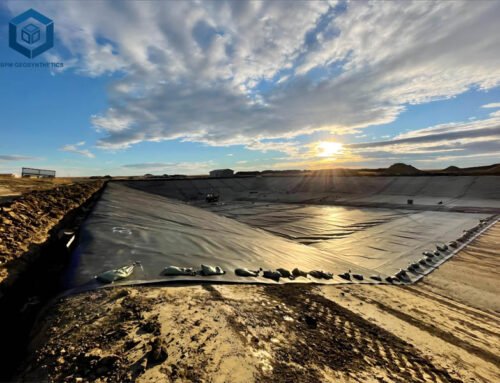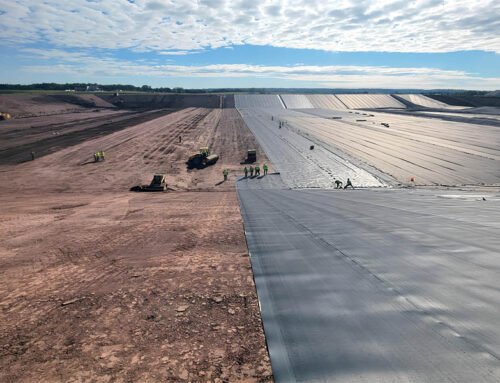HDPE geomembranes are known for their durability and long service life. Under normal conditions and proper installation, an HDPE geomembrane can last for several decades. The exact hdpe geomembrane last can vary depending on factors such as the thickness of the geomembrane, the quality of the material, the environmental conditions, and the specific application.
As the professional geomembrane manufacturer and supplier, BPM Geomembrane offers high quality HDPE geomembrane with custom size and thickness at best factory price.
1. Characteristics And Applications Of HDPE Geomembrane
HDPE geomembranes possess exceptional impermeability, chemical resistance, durability, flexibility, and weldability. They prevent the passage of liquids, gases, and contaminants, withstand corrosion, and have a long service life. Their flexibility allows for easy installation on irregular surfaces, and they can be welded to form seamless liners. HDPE geomembranes are environmentally friendly, as they are chemically inert and recyclable.
HDPE geomembranes prevent seepage, withstand harsh conditions, and provide effective barriers against contaminants.They are widely used in applications requiring reliable containment, such as environmental protection, mining, agriculture, landfill liners, wastewater treatment, and pond liners.
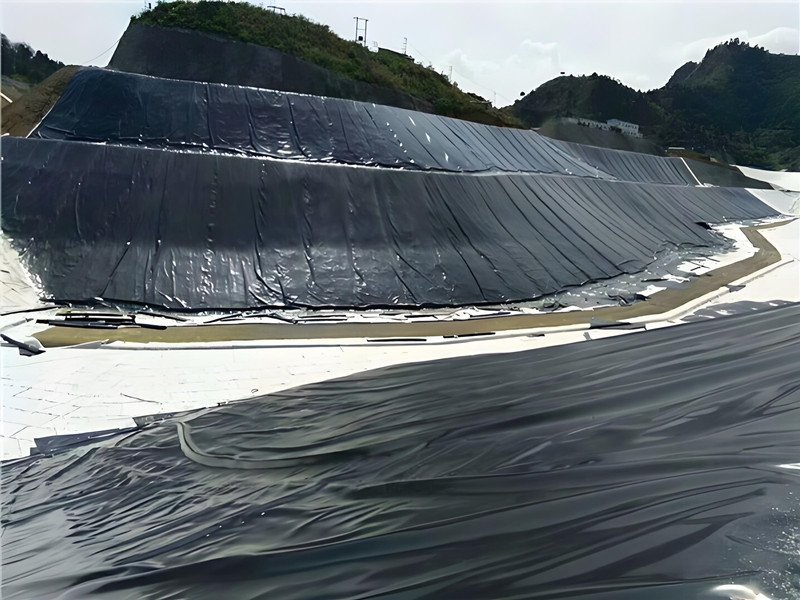
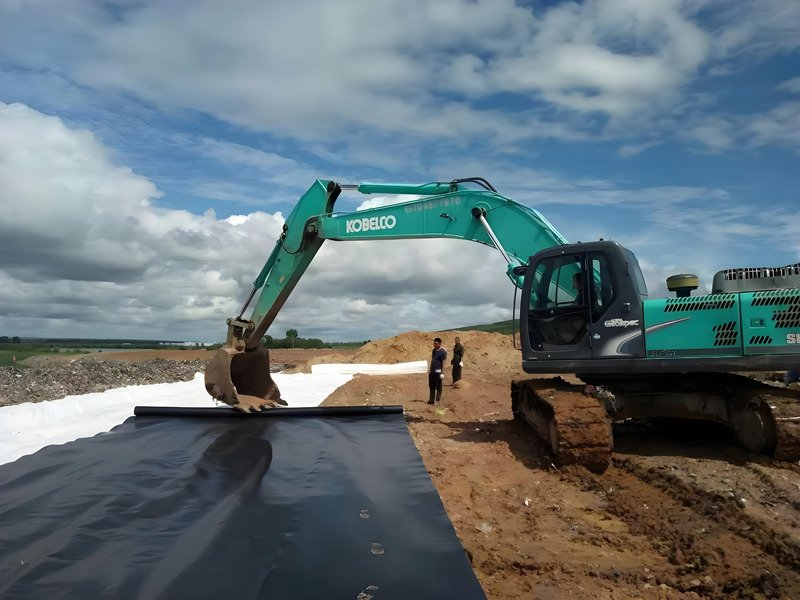
2. Expected Service Life of HDPE Geomembrane
BPM HDPE geomembrane Under proper design and construction conditions, HDPE geomembrane can achieve a service life of 30-100 years.The service life of HDPE geomembrane will vary greatly under different environmental conditions. It mainly has the following impacts:
2.1 Temperature Conditions
High temperature environment will accelerate the chemical aging and physical performance reduction of HDPE materials, and the service life will be greatly shortened.Low temperature environment is beneficial to the weather resistance of HDPE geomembrane, but too low temperature may also cause the material to become brittle and reduce its impact resistance.In areas with large temperature fluctuations, HDPE geomembranes are also susceptible to damage due to thermal expansion and contraction.
2.2 Ultraviolet Radiation Intensity
Strong ultraviolet rays will accelerate the photo-oxidation reaction of HDPE materials, resulting in a decrease in material strength and crack resistance.The service life of HDPE geomembrane exposed to strong ultraviolet rays for a long time will be significantly shortened.Reasonable shielding or soil covering can effectively reduce the ultraviolet radiation of HDPE geomembrane.
2.3 Chemical Environment Corrosion
PH, chemical concentration, etc. will affect the chemical stability of HDPE materials.In environments such as landfills where a variety of chemical pollutants exist, the service life of HDPE geomembrane is short.In relatively closed environments such as reservoirs, HDPE geomembrane has a relatively longer service life.
2.4 Mechanical Load
Mechanical factors such as building foundations and vehicle loads will cause local stress concentration in the HDPE geomembrane and increase the risk of damage.Reasonable covering soil thickness and buffer layer design can effectively protect HDPE geomembrane.
3. Methods to Evaluate Service Life of HDPE Geomembrane
3.1 Accelerated Aging Test
Accelerate the aging of HDPE geomembrane by increasing temperature, ultraviolet irradiation, etc., and estimate the actual service life
3.2 On-site Performance Monitoring
Field performance monitoring involves continuous monitoring of the geomembrane’s performance during its actual service life. This can include measuring parameters such as leakage rates, deformation, or changes in physical properties over time. By collecting data and analyzing the performance, the service life of the geomembrane can be assessed and any necessary maintenance or repairs can be identified.
3.3 Visual Inspection
Regular visual inspections can provide valuable information about the condition of the geomembrane. Inspectors look for signs of deterioration, such as cracks, tears, blistering, or discoloration. Any visible damage or degradation can indicate potential issues that may affect the service life.
3.4 Chemical Resistance Testing
HDPE geomembranes are often exposed to different chemicals in various applications. Chemical resistance testing involves exposing the geomembrane to specific chemicals and evaluating its resistance and compatibility. This helps determine how well the geomembrane will withstand exposure to different chemical environments and assess its service life in those conditions.
3.5 Accelerated Aging Tests
Accelerated aging tests simulate the effects of long-term exposure to environmental factors such as UV radiation and temperature. These tests subject the geomembrane to accelerated conditions for a specific period and then evaluate its performance. By accelerating the aging process, the test provides an estimation of the geomembrane’s durability and service life under normal environmental conditions.
BPM HDPE geomembrane adds anti-aging agents to the raw materials, which can inhibit external factors such as light, oxygen, and heat. We also add appropriate amounts of antioxidants, light stabilizers, and dark carbon black. On the one hand, it can enhance the performance of the anti-seepage geomembrane, on the other hand, it can delay aging and extend its service life.
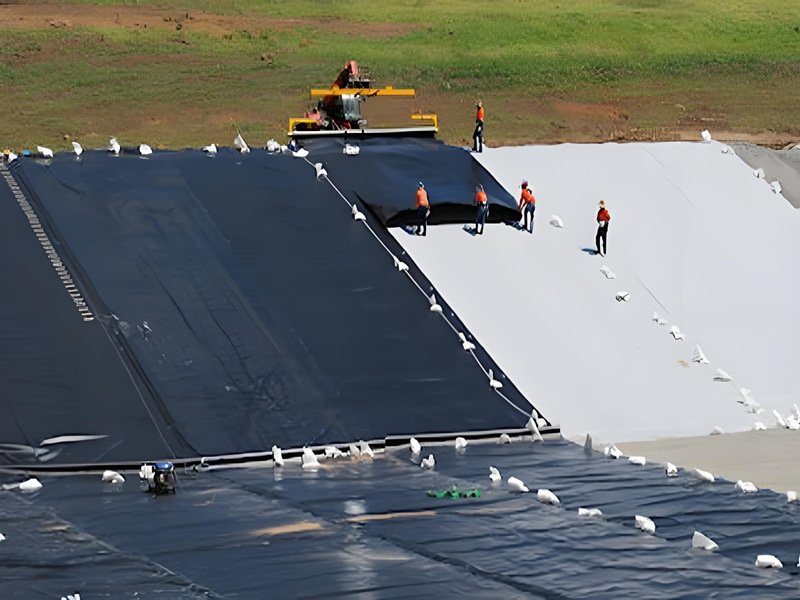
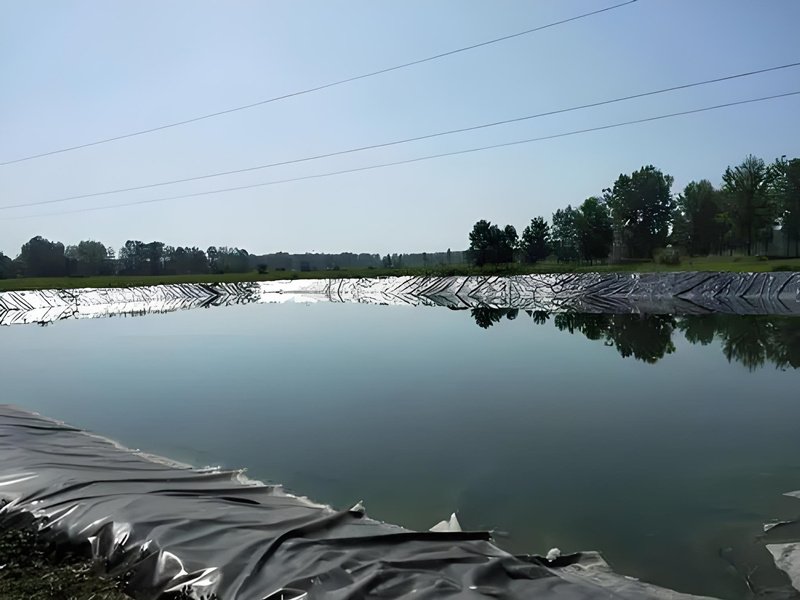
4. Measures To Extend Service Life Of HDPE Geomembrane
4.1 Reasonable Engineering Design
Thickening the soil layer, setting up isolation layers, etc. to protect the HDPE geomembrane from external factors and shorten the exposure time. We can take certain sun protection measures during the project to shorten the exposure time of the material to sunlight as much as possible. Use Geotechnical (required to be more than 750px thick) or deep water coverage, etc.
4.2 Optimize Construction Process
Strictly control the welding quality, avoid mechanical damage, etc., and use professional welding teams and high-quality machines.
4.3 Laying of HDPE Geomembrane
Before laying HDPE geomembrane, obtain the civil engineering project’s acceptance certificate. Accurately measure and cut the film to the required dimensions, numbering and recording each piece. Minimize welds while ensuring quality during installation. Overlap joints by at least 10cm and align welding seams parallel to the maximum slope. Shorten joint length in corners and deformed areas, avoiding welds near stress concentration zones on steep slopes. Avoid artificial wrinkles, tighten and lay the membrane flat in low temperatures. Minimize walking or placing objects that can damage the membrane after installation.
4.4 Precautions for HDPE Geomembrane Welding
The joint treatment of geomembranes is crucial for the project’s operational lifespan. Thermal welding is the recommended method, although special glue can also be used. Heat welding involves melting and fusing the surfaces of PE geomembranes under pressure. When laying the geomembrane, it is best to have a specific direction and reserve some PE film and PET non-adhesive layers on both sides. Adjust the direction of each unit geomembrane during installation to facilitate welding. After laying, sandbags should be used to prevent wind movement, and the edge joints must be clean and free from moisture and dust. Prior to welding, ensure smooth and wrinkle-free overlapping of the PE film at the seam. Experienced technicians should perform the welding using a specialized welding machine, adjusting temperature and speed accordingly.
4.5 UV Protection
HDPE geomembranes can be susceptible to degradation from UV radiation. Implement measures such as using protective covers, applying UV-resistant coatings, or incorporating a layer of soil or other materials to shield the geomembrane from direct sunlight.
4.6 Chemical Compatibility
Ensure that the HDPE geomembrane is resistant to the chemicals present in the specific application. In cases where there may be aggressive chemicals or substances, consider using additional protective layers or liners to mitigate the potential effects.
4.7 Regular Inspections and Maintenance
Conduct regular inspections to identify any signs of damage, degradation, or stress on the geomembrane. Promptly address any issues through repairs or replacement as necessary. Implement a regular maintenance program to keep the geomembrane in optimal condition.
4.8 Proper Drainage
Ensure that the drainage system is designed and maintained properly to prevent the accumulation of water or hydrostatic pressure that could affect the integrity of the geomembrane.
4.9 Monitoring and Record Keeping
Implement a monitoring program to track the performance and condition of the geomembrane over time. Keep detailed records of installation, maintenance, repairs, and any relevant information that can aid in future inspections and decision-making.
5. Summary
The service life of HDPE geomembrane can vary depending on factors such as quality, installation practices, environmental conditions, and application-specific considerations.Proper installation, regular inspections, maintenance, protection from UV radiation and mechanical damage, chemical compatibility, and appropriate drainage are key factors in extending the lifespan of HDPE geomembranes. By implementing these measures, the durability and effectiveness of HDPE geomembrane can be maximized.
We can manufacture to your special requirements, and can also provide ODM, OEM and customized services.
If you have any questions, please contact us.


